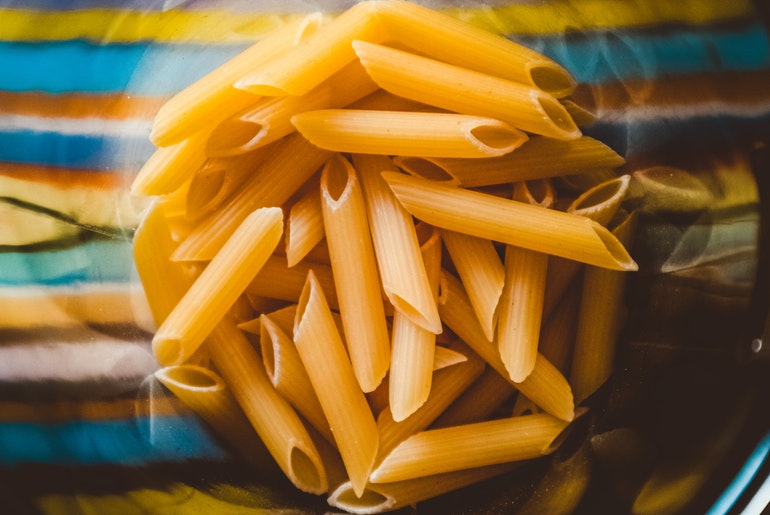Of all the foods we take into our bodies, none have endured the universal disdain of fat.
Yet a certain amount of fat helps keep your body running smoothly. It helps you grow, it helps you absorb certain vitamins like A, D, E and K, and it fuels your body with energy. Not only that, in their own way, some of the fats are like brain food, helping your thinking and learning power.
But most of its bad press is also well deserved. Too much of the wrong kind of fat can hurt you badly, setting you up for life-threatening diseases.
Even good fats need to be taken in moderation because of their high caloric content. There are nine calories in every gram of fat compared to four calories per gram of protein or carbohydrate. However, as popular diets like Atkins point out, when you do eat foods that contain some fat, you are more likely to feel full for a longer period of time and less likely to return for snacks than if you rely totally on no-fat food. They also point out, and correctly so, that many fat free foods actually contained more calories than other foods, since the fat that has been removed is replaced with sugar or other carbohydrates to enhance the taste.
Good Fats: What Are They?
You will recognize good fats on a food label by such distinctions as ͞monounsaturated͟ fat and ͞polyunsaturated͟ fat. You get monounsaturated fat when you eat nuts and seeds (peanuts, cashews, almonds and pecans), vegetable oils (sunflower, canola, olive, sesame, safflower, and peanut oils) and avocados.You also get polyunsaturated fat from the vegetable oils listed above and the same nuts and seeds as listed above. Furthermore, you can get them from fish oils and from fatty fish itself, such as trout, mackerel, herring, smelt and salmon.
Good fats give your body a dose of omega-3 and omega-6 fatty acids, and these are vital in healthy cell growth. If you don’t have sufficient amounts of these fats in your body, you can never look the glowing picture of good health. Instead, you will have dry and lifeless hair, breaking and brittle nails and dry, flaky skin. It is important to get the ratio of omega 3 and omega 6 correct.
Even more important than how you will look outside is how you will feel inside. Vitamin D, so vital for the growth and strength of your bones and teeth and essential for your body to absorb the calcium and phosphorous it needs, cannot be absorbed into your body unless you have a certain amount of ͞good͟ fat in it. Failure to absorb calcium and vitamin D leaves you prey to painful and crippling diseases like osteoporosis.
Fat also is needed to move vitamin A, E, and K (as well as D) through your bloodstream. It is Vitamin A that helps your skin to stay healthy and nourished, Vitamin E that ensures the proper functioning of your cells with its antioxidant properties, and Vitamin K which is essential for your blood to clot when you sustain a cut or scrape.
Good fats also have been found to sharpen your brain’s cognitive skills. Researchers from Brigham and Women’s Hospital studied 6,000 women aged 45 and older for four years, asking them to perform a cognitive functioning test every two years. They discovered that by substituting good fat for bad fat, a decline in memory could be avoided. Your brain needs both Omega-3 fatty acids (a form of polyunsaturated fat) to function and good sources are fish, nuts, whole grains, and fruits and vegetables. Omega-3 is instrumental in ensuring that nerve signals reach the brain for adequate responses. These vital connections are enhanced with new supplies of fatty acids.
Too Much of A Good Thing Is A Problem
If monounsaturated fat and polyunsaturated fat is so useful to your body, why not just go unabashedly after all those high fat dishes we love and enjoy them?
Because like so many things in life, even too much of a good thing becomes a bad thing. If you eat more good fat than your body needs, it is stored in your fat cells as well as your plasma, your blood and other body cells. Too much fat in storage means you become overweight and then obese. When you are overweight and obese, you become at risk for heart disease, certain kinds of cancer, and even dementia. The American Heart Association recommends that you get between 19 and 28 percent of your calories from unsaturated fats, and no more than seven per cent of your daily calories from saturated fat.
Bad Fats: Where They Are and Why You Want Them
There are two kinds of bad fats: saturated fats and trans fat. You find bad fats in meat and poultry, palm and palm kernel oils, shortening and lard.
Trans fat, which is recognized on food labels by the words ͞partially hydrogenated͟ means that a solid fat has been created from a liquid oil by means of a chemical process. Most of the trans fat found in a typical United Kingdom diet until recently came from commercially fried foods (yes, the beloved fish and chips), margarines, and bakery products such as cakes, cookies and doughnuts and snack foods made with partially hydrogenated oils and fats. In the United Kingdom, where 150,000 people die every year from coronary heart disease and stroke, the Food Standards Agency (FSA) commenced work in 2001 to develop healthy food strategies within the food industry Fats are a complicated subject in any nutrition manual because of the varying types, the complexity of their makeup and their contradictory nature (small amounts of some are good, larger amounts are bad).
Everyone looks for quick and easy rules to guide them, and it is difficult on the subject of fats, although we do offer effective repairs below.
Effective Repair
1. Try to have a moderate intake of saturated fats and totally eliminate trans fats from your diet. There is little or no good that will follow from the consumption of trans fat.
2. Eat a very little amount of unsaturated fats each day.
That means a handful of nuts or seeds, a small portion of salmon or mackerel or other fatty fish, and a sprinkling of vegetable oils.
3. Read food labels carefully to determine just how much fat and what kind of fat is in each product you purchase.
4. Choose lean cuts of meat; cut the skin off poultry prior to cooking.
5. Try to eat fish once a week.
6. Using small amounts of butter is better (more natural product) than margarine (which is highly processed and totally unnatural). However, this is not a license to add butter at will to foods – limit intake.
7. Make as many meals from scratch as you can. Heavily processed ready-to-eat foods and fast foods normally contain far more fat than the food you cook closer to its natural state.
8. Ensure that the bulk of your diet is comprised of vegetables, whole grain products and fruit.
9. Try at least one or two nights a week to enjoy a meatless meal using high-protein alternatives like nuts, seeds, or beans and lentils.
10. Instead of using high-fat commercially prepared salad dressings, create your own using olive oil with a bit of balsamic or other flavoured vinegar and a bit of lemon juice and herbs from your pantry.
11. Try eating a few walnuts or adding a bit of flax-seed to your baking to keep up your intake of omega-3 alpha-linoleic acid (ALA).






